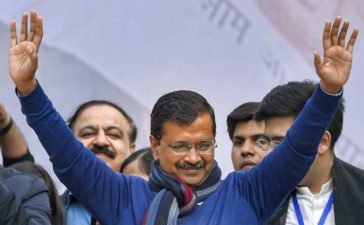New Delhi: Now very soon you could see Military rule applicable around 17000 Central Board of Secondary Education. As Prime Minister’s Office (PMO) asked the ministry of human resources to consider replicating the model of Sainik schools (military schools) in all CBSE schools across the country.
The PMO was pushing for sainik school-type learning to promote discipline, physical education and a patriotic outlook among students.
There are 25 sainik schools across the country, according to the 2016-17 annual report of the defence ministry. The schools, run by Sainik Schools Society, admit students based on entrance tests held in January every year.
“Approximately one-fourth of cadets in each batch of National Defence Academy (NDA) are from sainik Schools,” the annual report of the defence ministry said.
“For the 136th NDA/ INA course, which commenced in July 2016, a total of 102 cadets from all sainik Schools have joined the NDA and Naval Academy”.
The human resources ministry is keen to develop the model initially in Kendriya Vidyalayas (KVs or central schools) and Jawahar Navodaya Vidyalayas (JNVs) under the control of the CBSE.
The ministry is of the view that it would be easier to replicate such elements in JNVs, which are also residential schools. There are 1,113 KVs and 587 JNVs across the country, according to CBSE data.
KVs address the educational needs of the children of transferable central government employees, including defence and para-military personnel by providing a common programme of education to develop the spirit of national integration and create a sense of “Indianness” among children, according to the 2015-16 annual report of the Kendriya Vidyalaya Sangathan that manages KVs.
Over 1.2 million students are enrolled in KVs at the end of March 31, 2016, the latest data available.
“These schools, run by the centre, provide quality education to talented students from rural areas, selected through an entrance test.”
The admission in JNVs is through the Jawahar Navodaya Vidyalaya Selection Test at class VI across the country, according to the 2015-16 annual report of the CBSE.
The test is conducted in three phases in a year in different parts of the country as summer-bound session during February, winter-bound session during April and extreme winter-bound session during June.
JNVs are situated in rural areas, and the central government provides free schooling and accommodation to the selected students. “The state government has to offer cost free land and rent free temporary buildings for the setting up of a Navodaya Vidyalaya,” according to this note by Navodaya Vidyalaya Samiti that runs these schools.
The government spent Rs 3.69 crore per KV in 2015-16, up 20% from Rs 3.08 crore in 2013-14, according to this reply to the Lok Sabha (lower house of Parliament) by the ministry of human resources on April 10, 2017.








